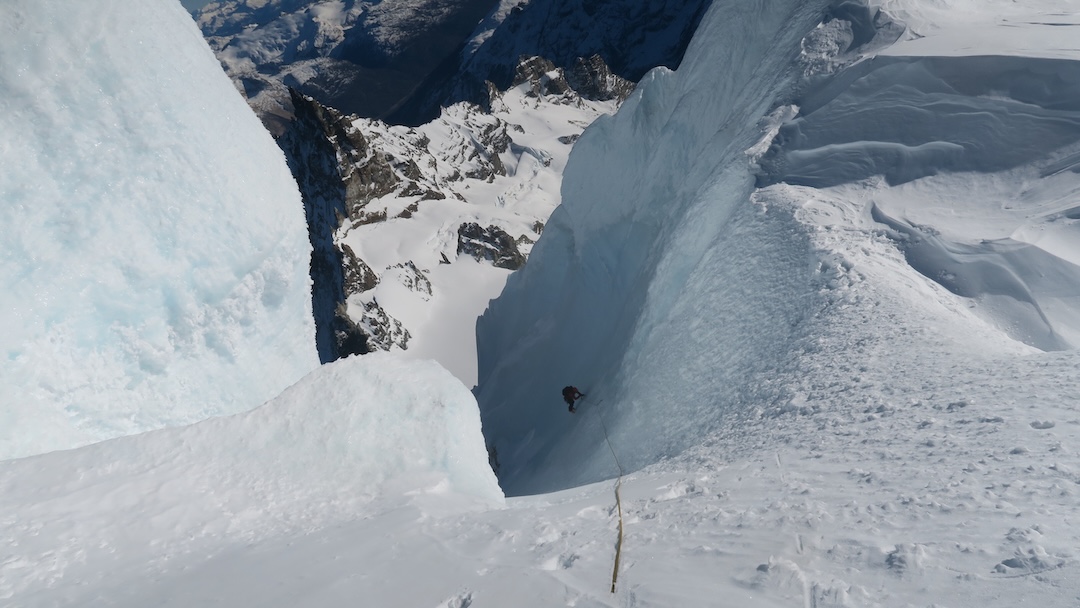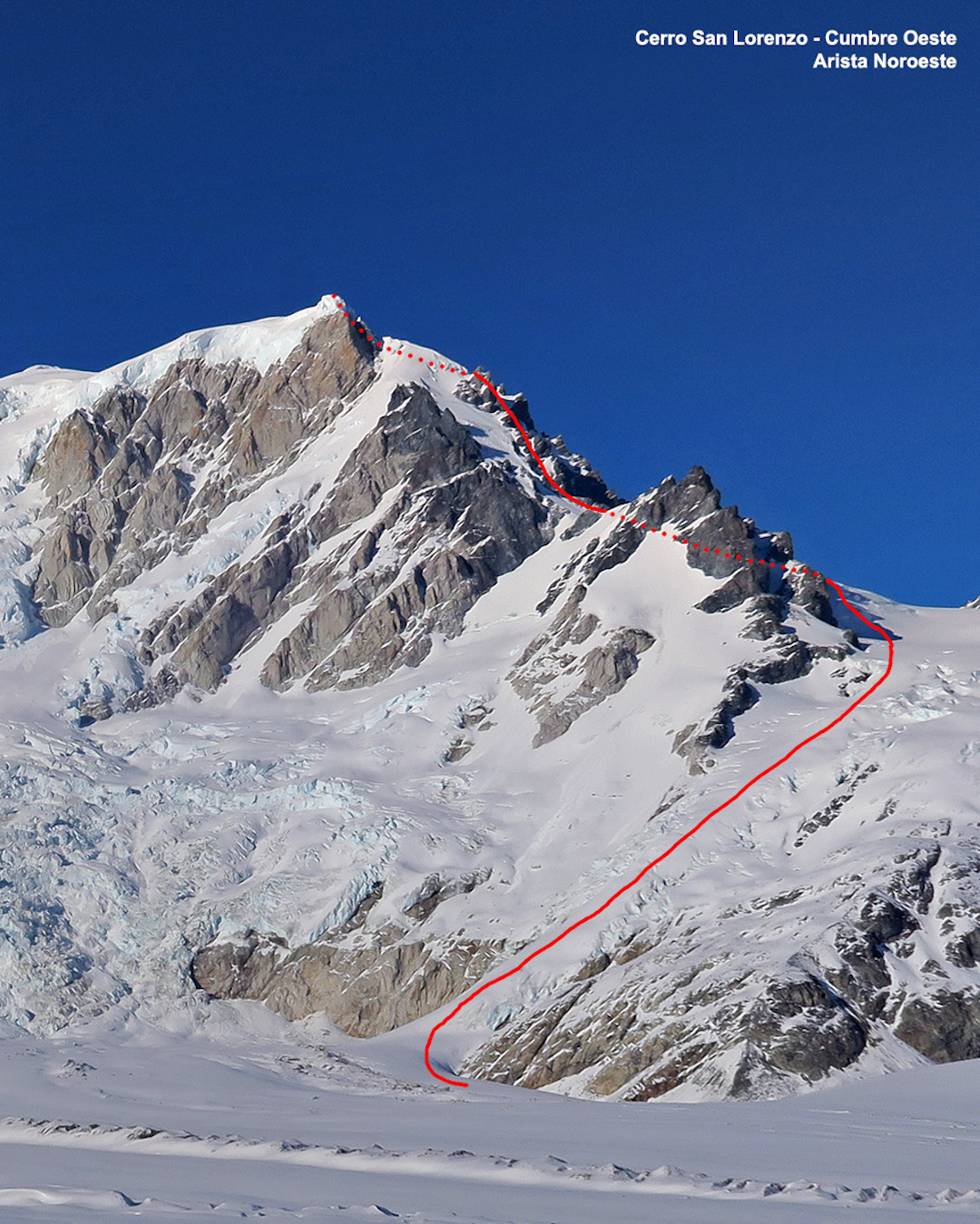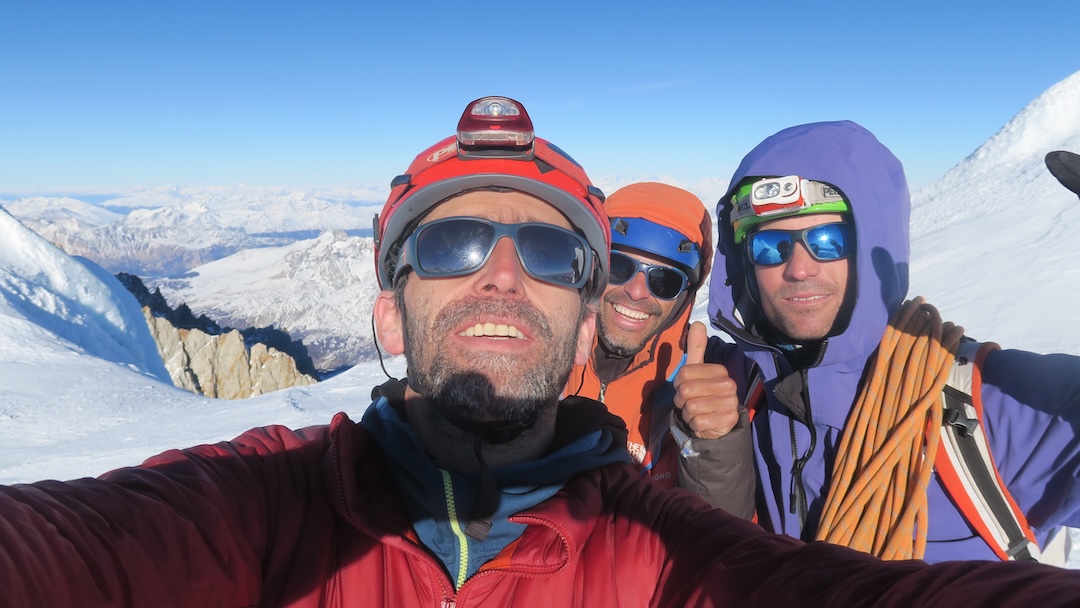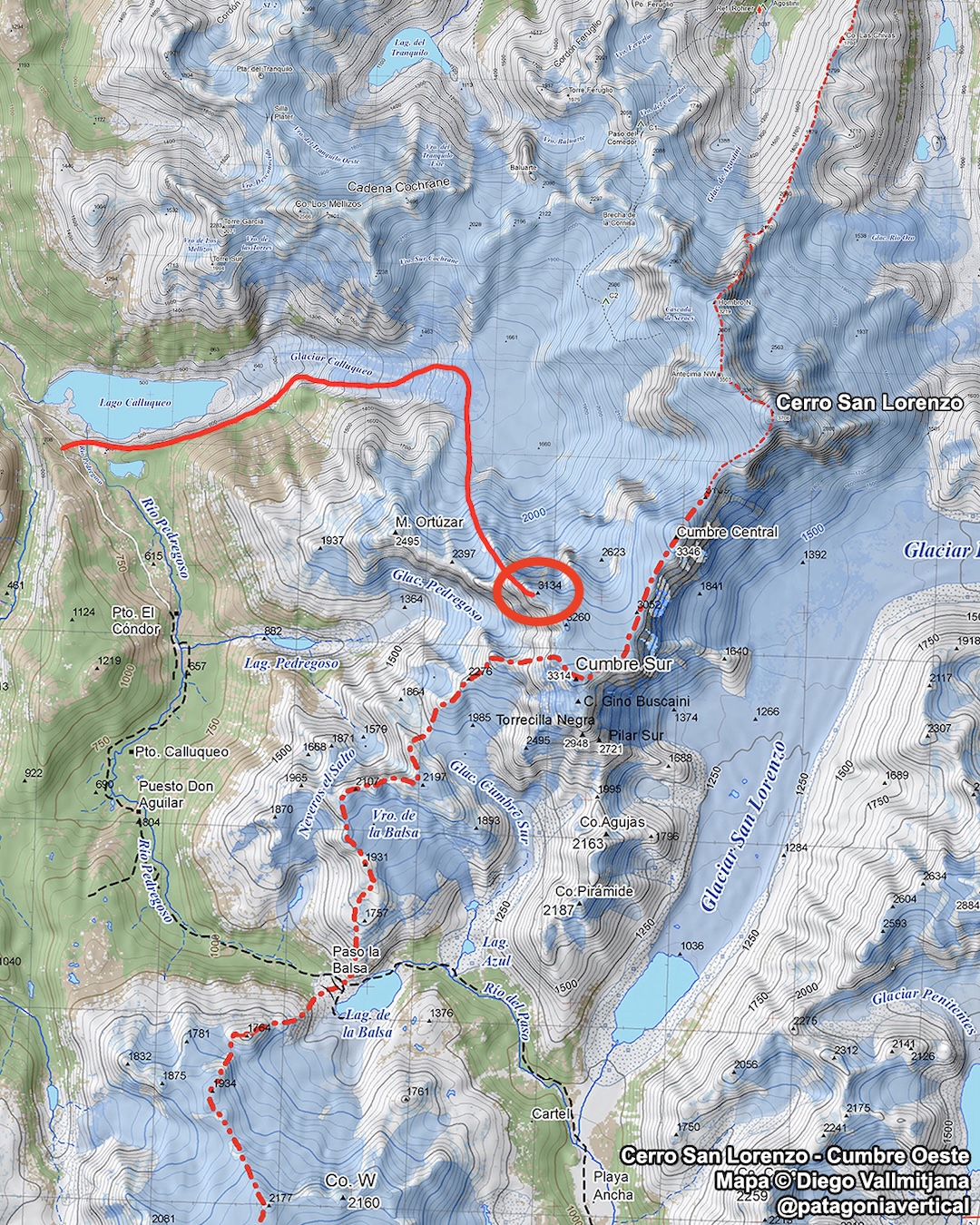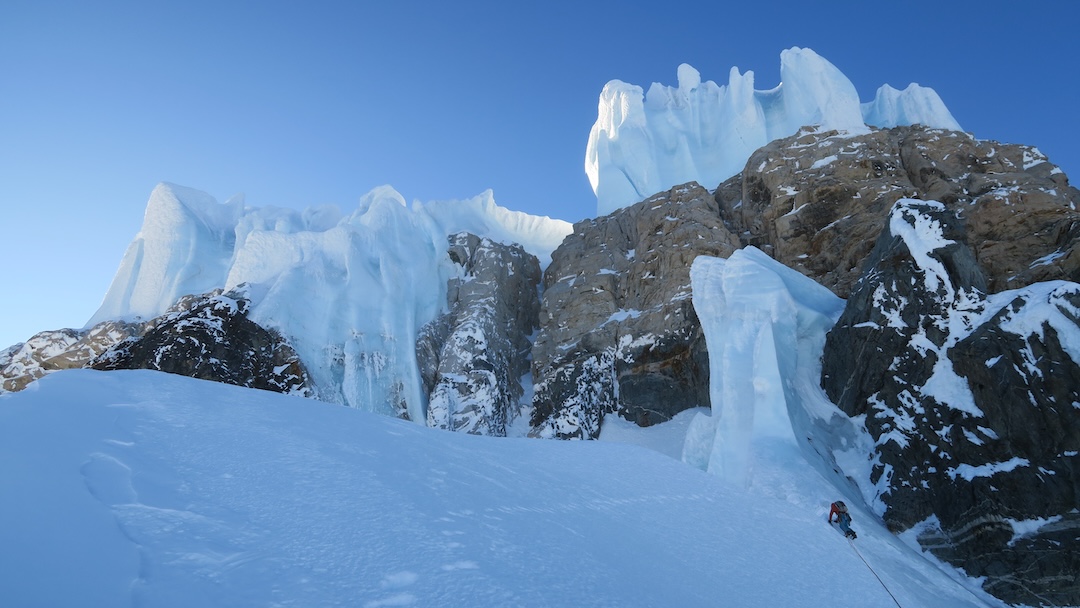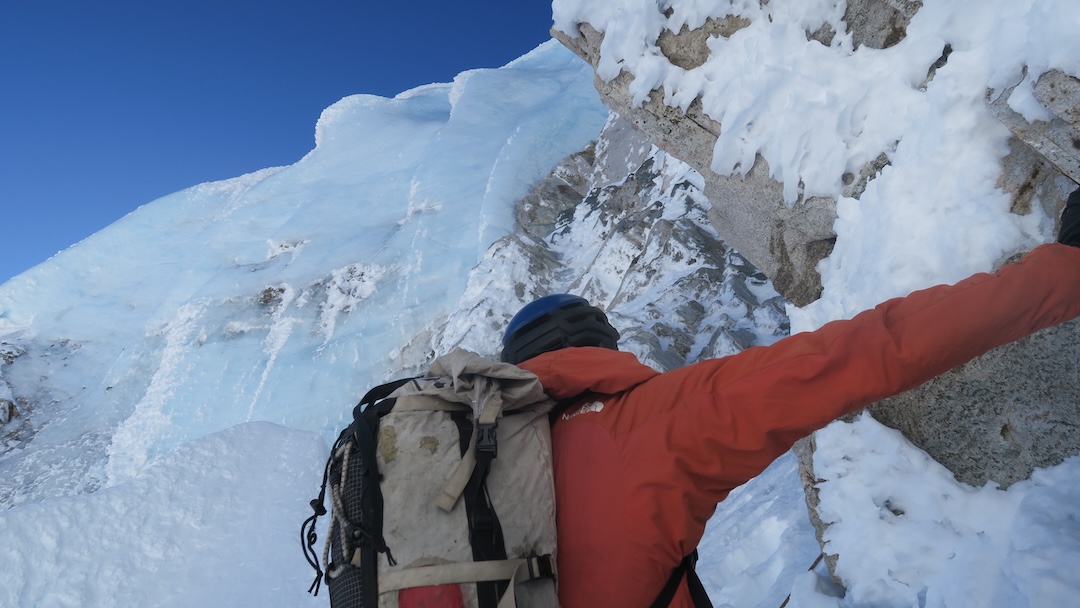Monte San Lorenzo, Northwest Spur of Western Subpeak
Chile, Central Andes

Over six days from May 13 to 18, 2024, during a cold window of high pressure in Patagonia, Martin Arteaga, Pablo Miranda, and I, all from Chile, climbed a western subsummit (3,134m) of Monte San Lorenzo (3,706m), the second-highest mountain in Patagonia.
A sprawling north-south massif with multiple summits—including a main (north), central (3,346m), and south (3,314m)—Monte San Lorenzo, also known as Cerro Cochrane, was first climbed by a long glacier route from the west, starting in Chile, in 1945. Modern climbers have focused on the huge, steep walls of the eastern (Argentinian side).
We accessed the mountain on skis from the southern edge of Lake Calluqueo, following the glacier of the same name that guards the peak’s western flanks. We spent four days crossing this glacier and making our way to the base of the face. This approach, more than the route, was complex and dangerous, as we had to cross a large glacier in autumn, with many open crevasses and very little snow cover. After some deliberation, we moved our camp multiple times to be able to start from the base of the route and make the climb in one day.
On May 17, we began the ascent from our high camp. Over 900m of climbing, we first found mixed pitches up to M4 in high-quality fissured granite, then connected to the upper mountain, where we climbed three high-quality pitches in blue ice tubes that took us to the western top (3,134m). [This is the westernmost of two small subsummits to the northwest of San Lorenzo’s south summit.] These were by far the best pitches of the route, pristine and consistent. After basking in incredible views of all the surrounding Patagonian mountains, we descended from the summit via nine rappels, mostly off pitons but also a few Abalakovs.
—Raimundo De Andraca, Chile


